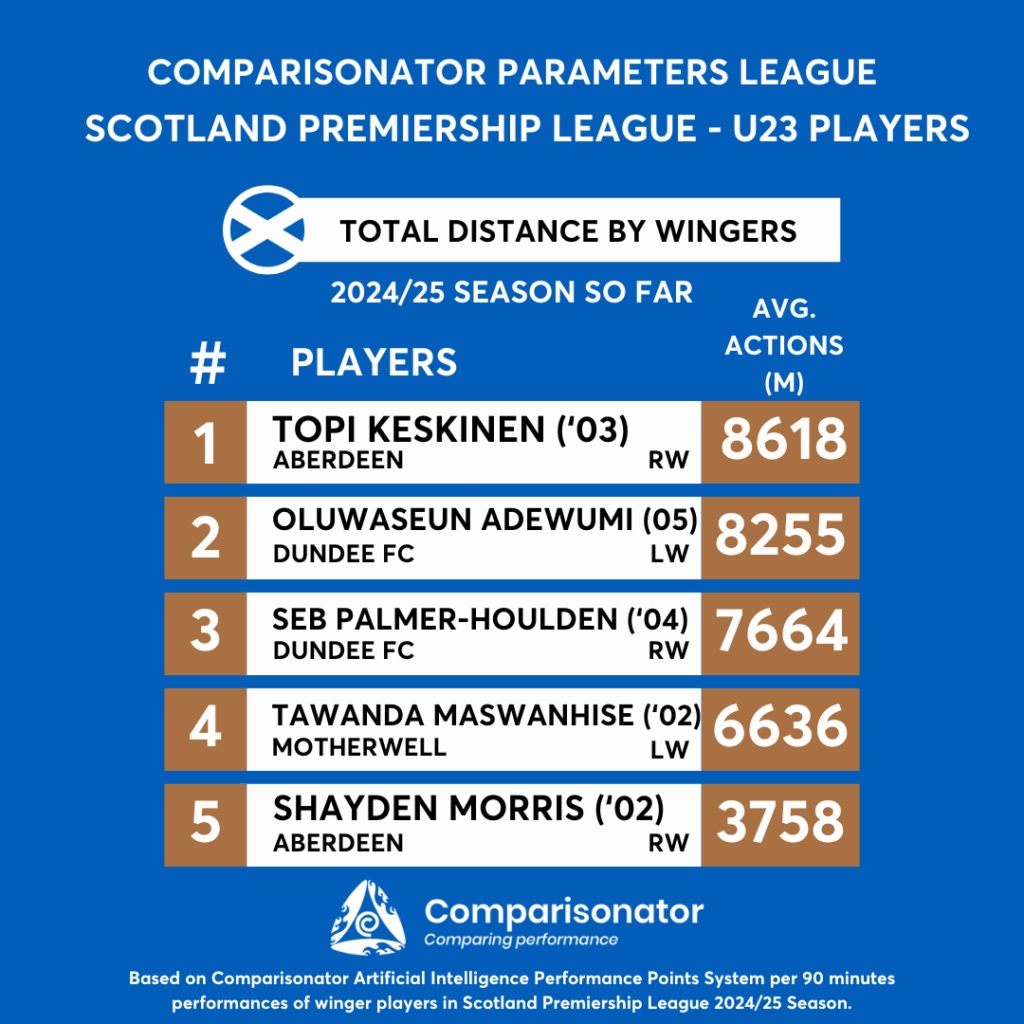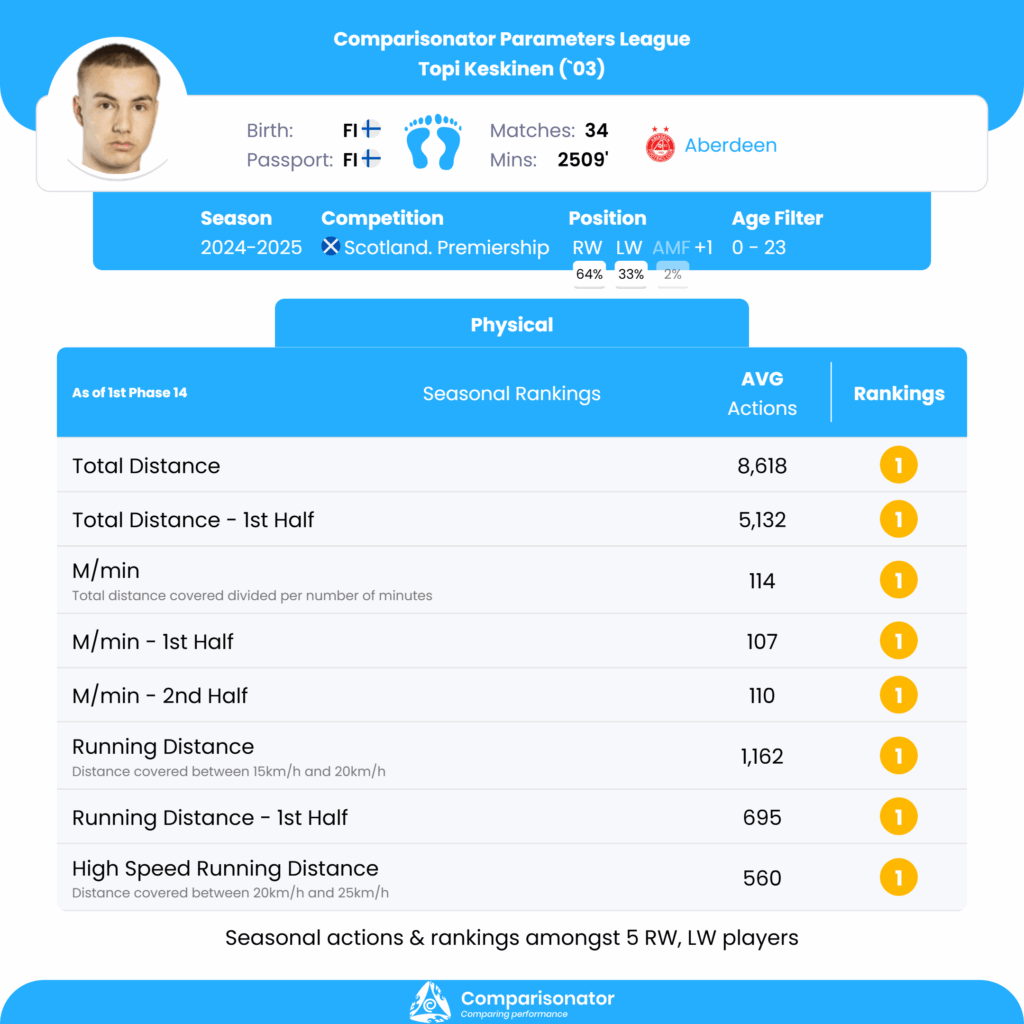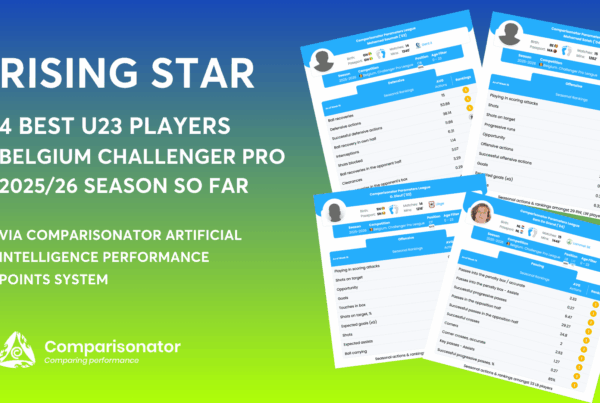As modern football continues to demand higher physical intensity, tracking player movement data has become vital for identifying top-performing talents. Using the advanced Comparisonator Physical Data Comparison Module, we’ve analyzed Scotland Premiership to highlight the best U23 players in three key physical parameters for the 2024/25 season so far. This in-depth evaluation provides clubs, scouts, and analysts with a clearer picture of emerging athletes whose physical capabilities set them apart on the pitch.
These insights reflect the growing importance of physical metrics in modern scouting and recruitment processes. By extracted from broadcast data via AI, clubs can benchmark player performances with accuracy and context.
In the High Speed Running (HSR) Distance category—measuring distance covered 20-25 km/h—Tom Sparrow leads the way, showcasing his ability to maintain rapid movement in high-tempo game situations. Lyall Cameron stands out in Running Distance, covering more ground than any other U23 player this season, underlining his stamina and work rate across 90 minutes. Meanwhile, Topi Keskinen claims the top spot for Total Distance, highlighting his explosive pace and frequent high-speed bursts exceeding 20 km/h.
The results not only spotlight Scotland’s rising stars but also demonstrate how physical analytics can power smarter football decisions—whether identifying undervalued talent or building competitive squads. Stay tuned as we continue to uncover more data-backed standouts throughout the season.
Please note that all numbers are per 90 min data from the 2024/25 Season – So Far.
Tom Sparrow’s CompaGPT Physicals report:
Sparrow is ranked first with 42.56 high accelerations per match, surpassing Josh Mulligan who averages 41. This highlights Sparrow’s agility and explosive speed, enabling him to swiftly transition between defensive duties and supporting attacks. His ability to accelerate frequently might be vital in counter-attacking scenarios and pressing opposition players to regain possession. Sparrow tops this metric with 349.19 meters, compared to Ziyad Larkeche’s 292.01 meters. This suggests Sparrow’s capacity to perform high-speed runs early in matches, providing depth on the flanks and supporting both defensive and attacking efforts. His ability to cover significant ground at high speeds can be strategic for stretching defenses and creating space. Sparrow achieves an average max speed of 36.68 meters per match, placing him first ahead of Ewan Wilson at 35.93 meters. This indicates his capability to reach high velocities, adding a dimension of threat in offensive plays, particularly in fast-paced transitions and chasing down loose balls.
Tom Sparrow’s strengths lie in his exceptional first-half physical output, including total distance, accelerations, and decelerations, combined with impressive high-speed running and maximum speed capabilities. These attributes position him as a dynamic and effective player early in matches, capable of influencing both defensive stability and attacking momentum. However, there may be areas to explore for enhancing his second-half endurance and medium-intensity actions to ensure sustained effectiveness throughout the entirety of matches.
Tom Sparrow (’02) (RB) – Motherwell

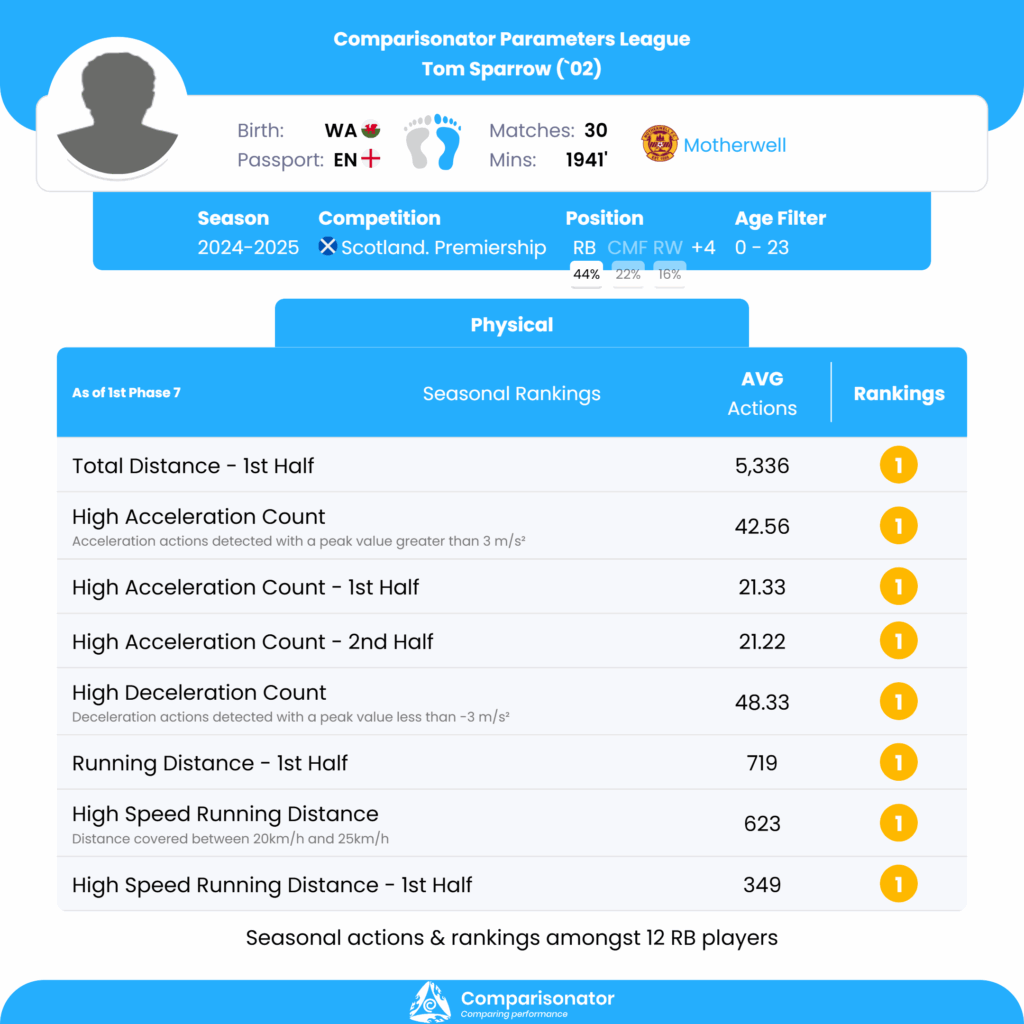
High Speed Running (HSR) Distance
Lyall Cameron’s CompaGPT Physicals report:
Cameron tops the ranking with a 1927.65 Running Distance average per match, surpassing Lennon Miller’s 1625.34. This showcases his stamina and work rate, essential for covering large areas of the pitch. His high running distance is indicative of a midfielder capable of contributing significantly to both defensive duties and offensive support throughout the match. With a 747.85 High Speed Running Distance average per match, Cameron again leads, ahead of Josh Mulligan’s 615.59. This underscores his ability to sustain high-speed runs, crucial for exploiting spaces and creating attacking threats. His proficiency in high-speed running is vital for roles demanding dynamic movement and rapid transitions.
Lyall Cameron’s standout performance in Medium Acceleration Count, High Acceleration Count, Medium Deceleration Count, Running Distance, and High Speed Running Distance highlights his physical prowess and dynamic playing style. He consistently ranks as the top performer in several key physical metrics, underscoring his ability to contribute effectively to both offensive and defensive phases through quick transitions and sustained high-speed play. Enhancements in early match total distance and second-half movement intensity might further refine his impact and influence, solidifying his role as a dynamic and versatile midfielder.
Lyall Cameron (’02) (CMF) – Dundee FC
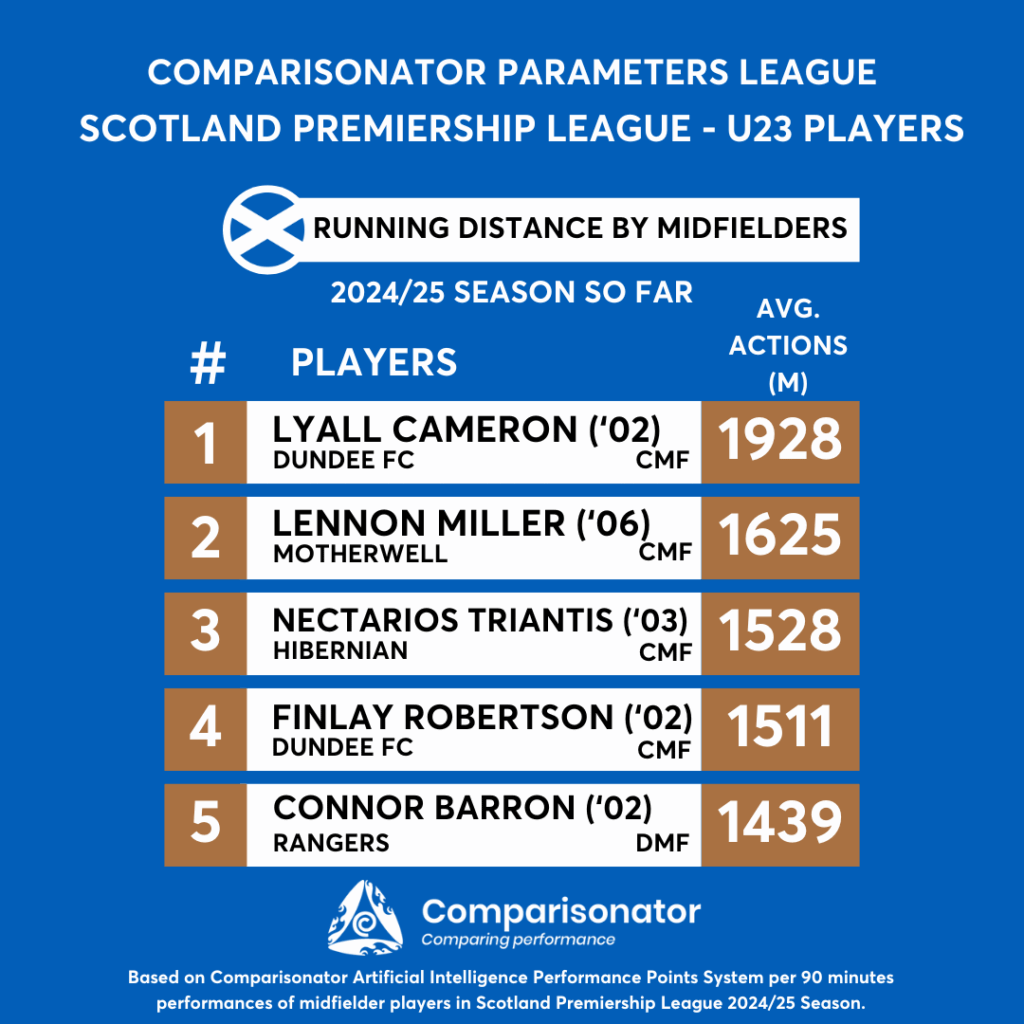

Running Distance
Topi Keskinen’s CompaGPT Physicals report:
Topi Keskinen ranks first in Total Distance and High Speed Running Distance, averaging 8618.06 meters and 559.73 meters per match, respectively. Compared to players in similar positions, this indicates exceptional stamina and ability to maintain high intensity throughout the game. His dominance in these metrics suggests a tactical advantage in sustaining pressure and contributing effectively both offensively and defensively. Leading in Running Distance with 1162.29 meters per match, Keskinen displays impressive work rate and mobility. This ability to cover ground efficiently can be tactically leveraged to exploit spaces and support both attacking and defensive transitions.
Topi Keskinen’s best ranking parameters are his Total Distance and High Speed Running Distance, particularly in the first half of matches. His impressive work rate and stamina offer tactical advantages in maintaining high intensity and pressure on opponents. However, focusing on improving second-half endurance and acceleration capabilities can further elevate his overall impact on the pitch, making him a more consistent and versatile asset to his team.
Topi Keskinen (’03) (RW) – Aberdeen
